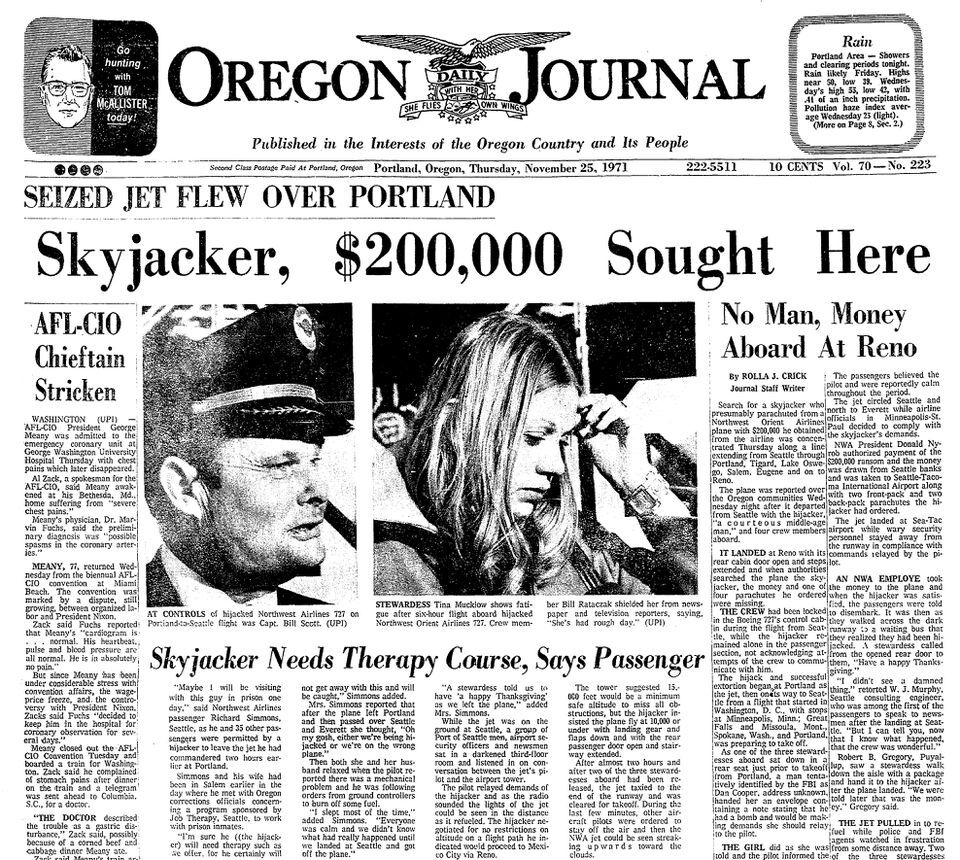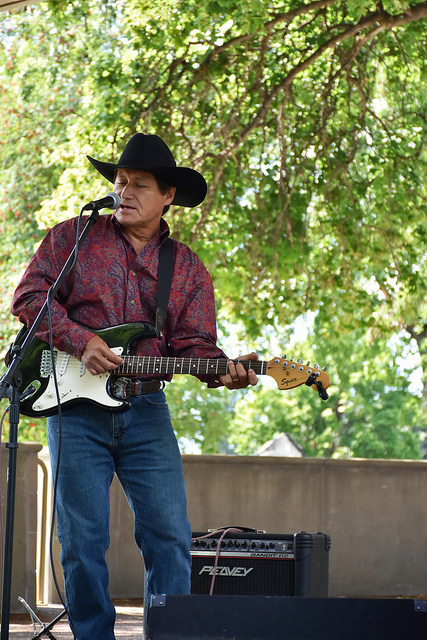D.B. Cooper legend began 50 years ago
Published 10:23 am Wednesday, November 24, 2021

- The Oregon Journal on Nov. 25, 1971.
“Bomber hijacks Portland jet flight,” The Oregonian’s headline screamed from the front page.
Trending
“Skyjacker, $200,000 Sought Here,” offered The Oregon Journal.
Fifty years ago, on Nov. 24, 1971, a “nondescript,” well-dressed man bought a $20 ticket at Portland International Airport and boarded Northwest Orient Flight 305 bound for Seattle.
That man would hijack the Boeing 727 and ultimately parachute out of the plane somewhere over the Pacific Northwest. He took $200,000 in ransom with him.
Trending
The Journal’s coverage the next day included an interview with a Flight 305 passenger named Richard Simmons, who ran an employment program, called Job Therapy, for former convicts.
“I’m sure (the skyjacker) will need therapy such as we offer, for he certainly will not get away with this and will be caught,” Simmons said.
It turned out Simmons was wrong. The skyjacker almost certainly never partook in Job Therapy, for he was never found, the crime never solved.
And ever since Nov. 24, 1971, the mystery of D.B. Cooper (the skyjacker bought the ticket using the name Dan Cooper) has fascinated people the world over. Last weekend, more than 200 people gathered at the Kiggins Theatre in Vancouver for CooperCon, a celebration of the case’s myriad theories and suspects. The FBI officially abandoned the hunt in 2016.
The arrival of the half-century mark has spiked interest, but the heyday of Cooper fascination was the 1970s — right here in the Pacific Northwest. That’s when the annual celebrations of the skyjacker spontaneously started in Ariel, Wash. That’s when T-shirts with the message “D.B. Cooper, where are you?” popped up at Portland stores.
An example of how Early Coopermania expressed itself: Someone secured a credit card in the name of D.B. Cooper and started having luxury items sent to an apparently random office at 4429 NE Broadway in Portland. The cardholder never paid for the purchases, of course, prompting American Express to send a letter to the office that began: “Dear Mr. Cooper: Quite frankly, the American Express Card is not for everyone.”
The quest to find the real D.B. Cooper, meanwhile, continued apace.
Five years after the skyjacking, a farmer in Clark County discovered a “tattered and moss-stained” pair of pants in a tree. He called the FBI, and G-men hustled out to the farm — though they seemed a little embarrassed when reporters also showed up.
“All we want to do is pose the question, ‘Are these his pants?’” Agent Dick Dyer told the press. “We’ve been getting pants, parachutes and parachute cords for five years. I’m not that excited about it, but we’ve got to give it the full shot.”
Despite that full shot (the agents sent the potential evidence to the FBI Lab in Quantico, Virginia), we still don’t know if those were D.B. Cooper’s pants. Just as we don’t know the skyjacker’s real name or whether he survived the dangerous nighttime leap from Flight 305.
The same year that produced the wayward pants also saw publication of a comic D.B. Cooper novel, “King of the Midnight Blue,” by a Seattle writer named Darrell Bob Houston. “Sex and Skyjack Shocker,” the book’s cover promised.
Houston immediately received feelers from Hollywood, he said, but he scotched any potential deal by demanding a whopping $200,000 for the rights — in 20-dollar bills, plus four parachutes.
No matter. Like most Cooper chasers over the years, Houston wasn’t in it for the money. Something about the mysterious skyjacker spoke to him.
“D.B. Cooper was an outlaw, yes,” Houston said while promoting his book in Portland. “But I guess the saving grace was that he didn’t hurt anybody. Besides, if we eliminated all the outlaws, like Billy the Kid and Jesse James, what heroes would America have left?”









